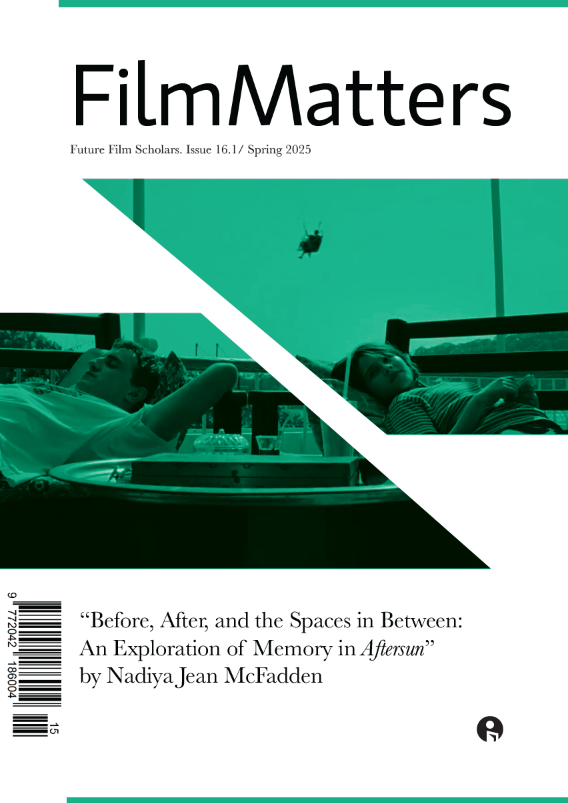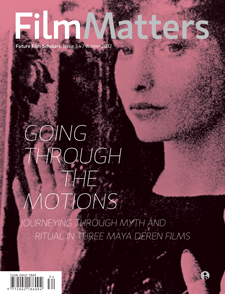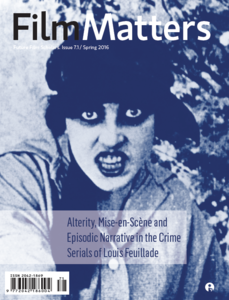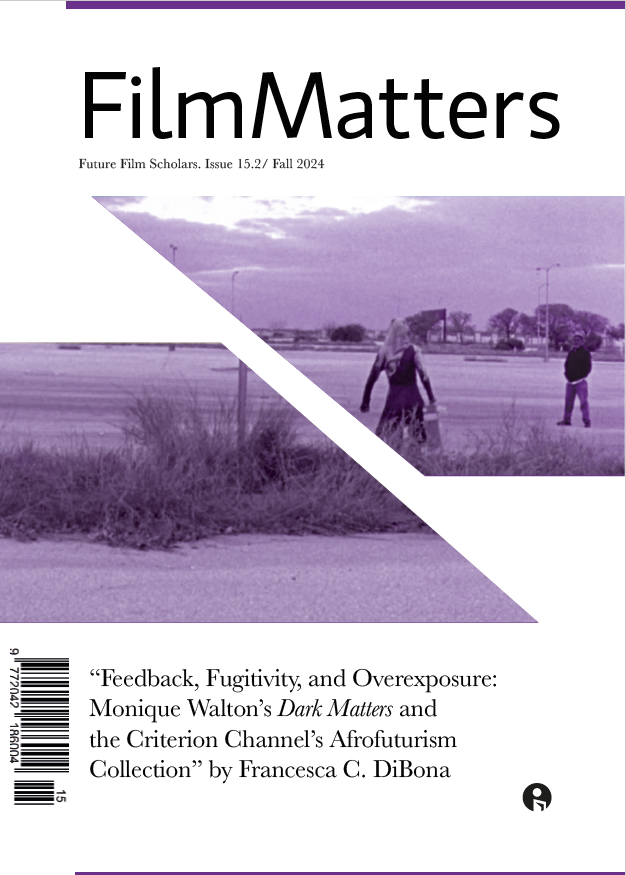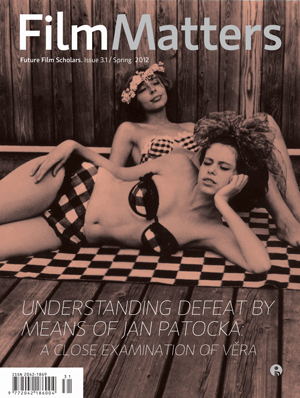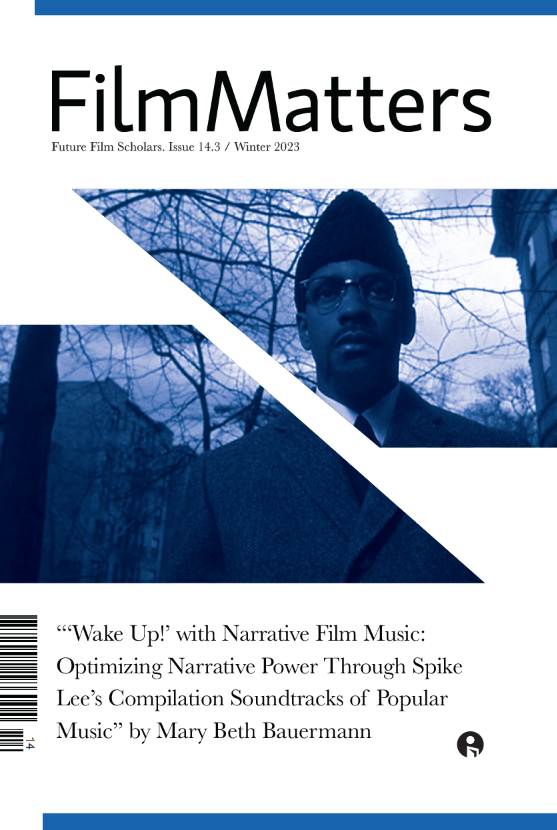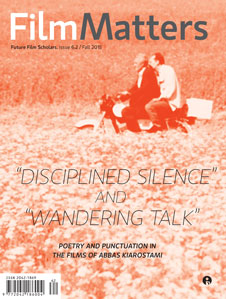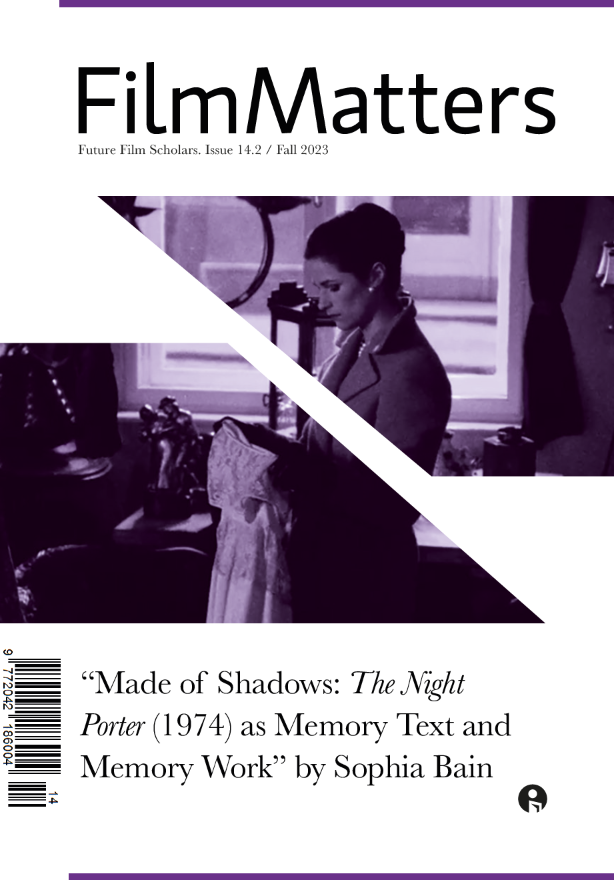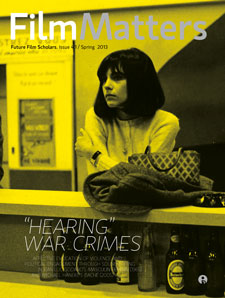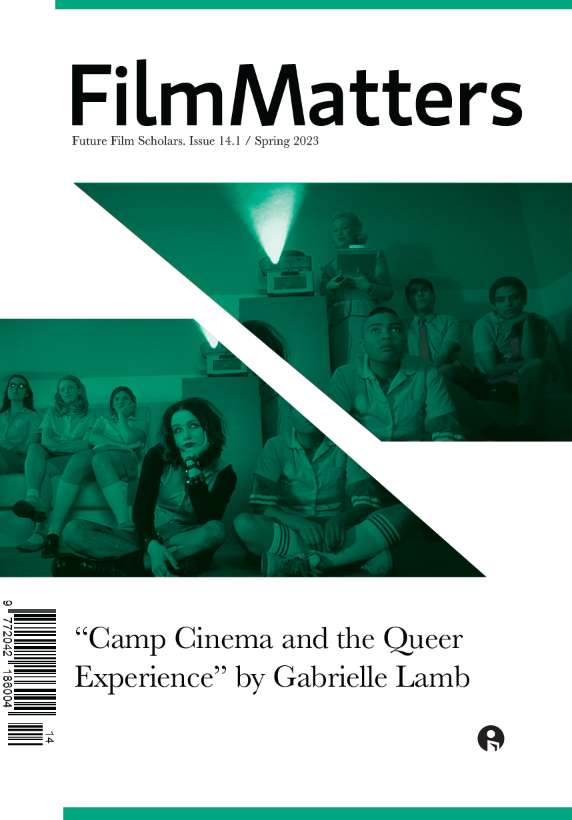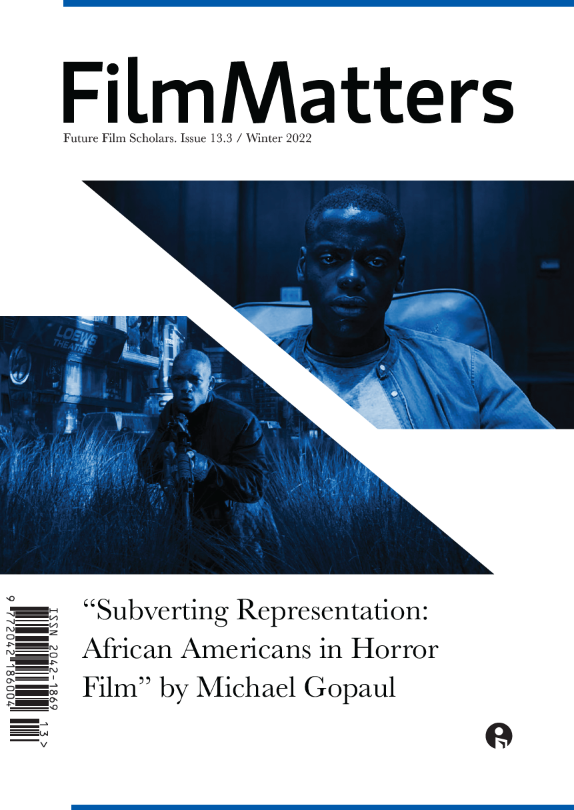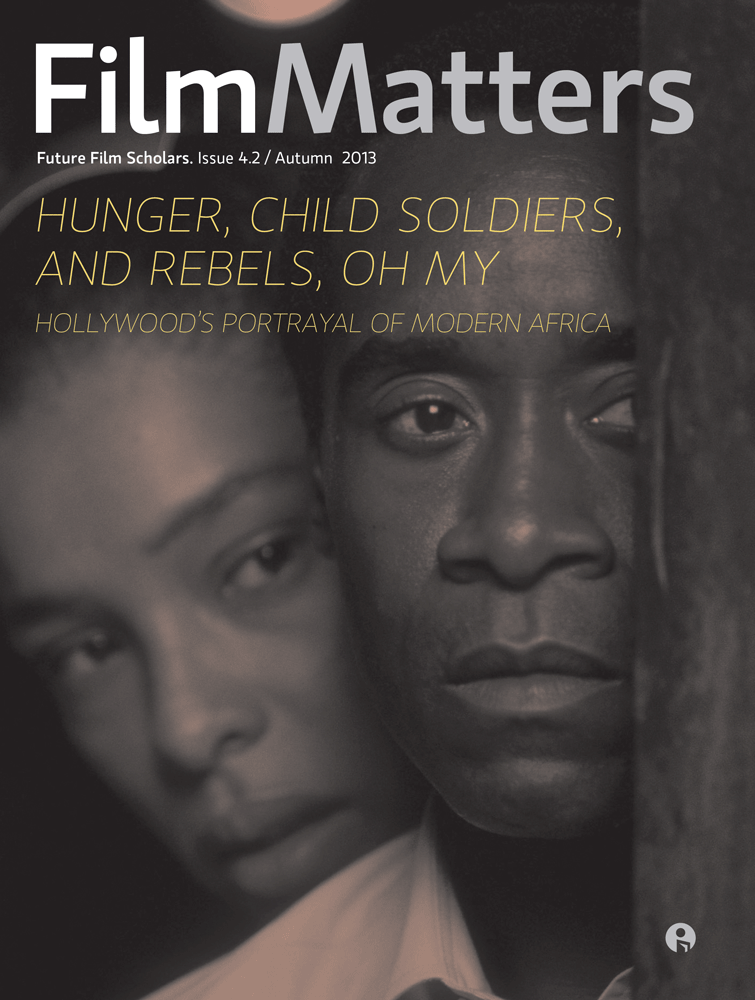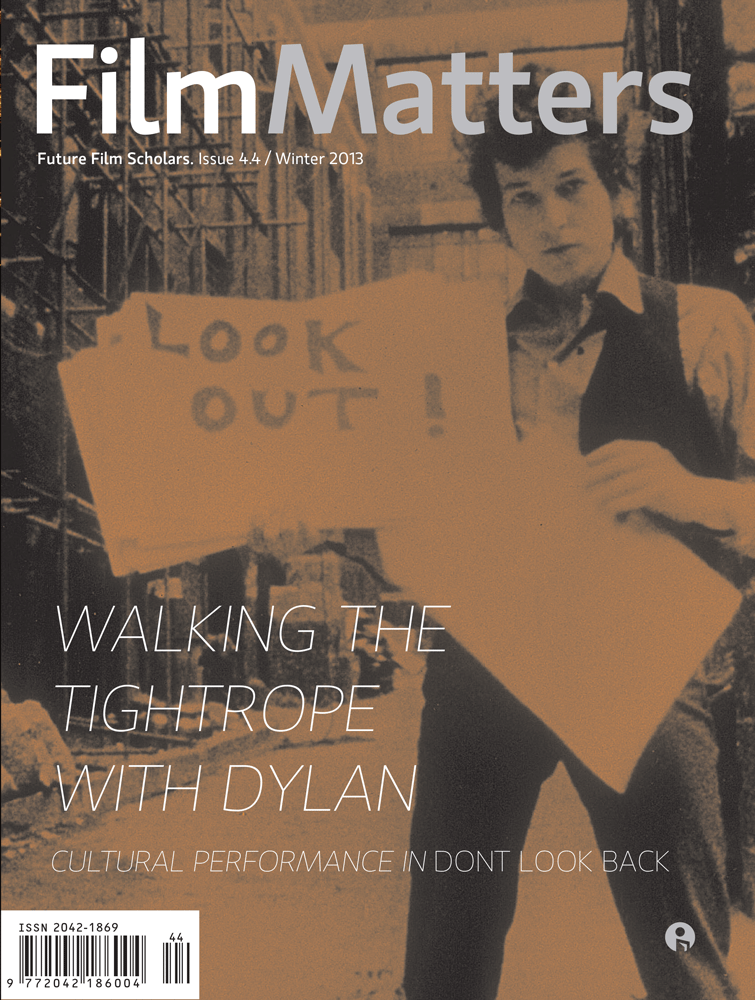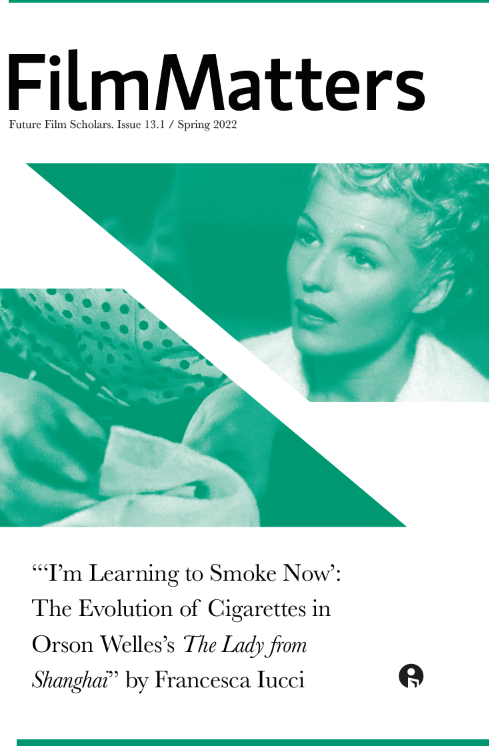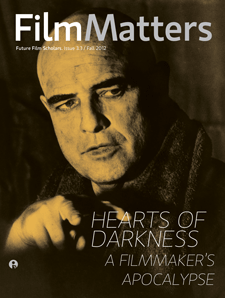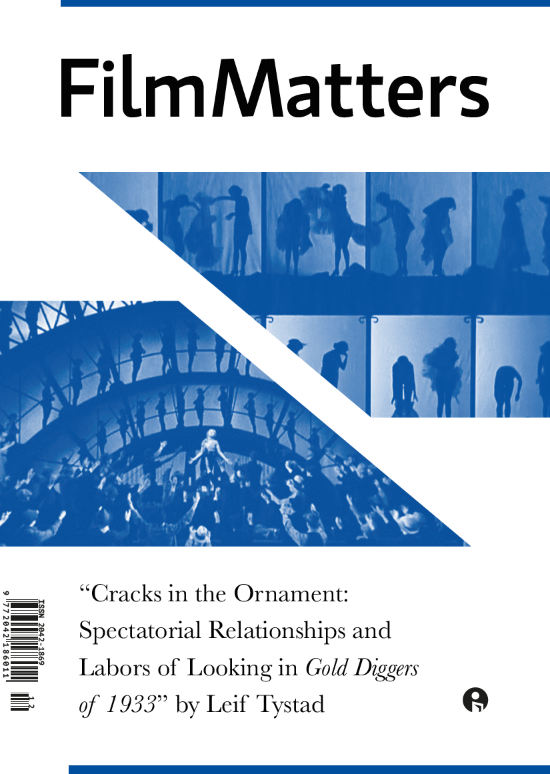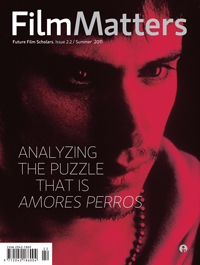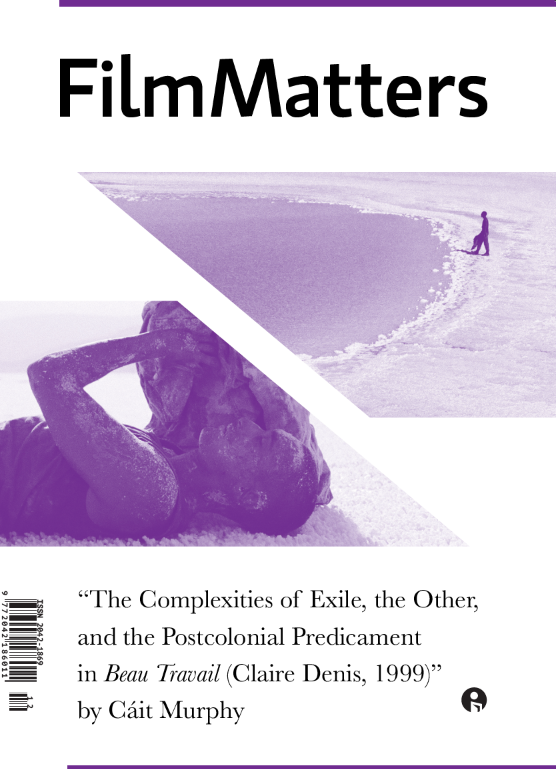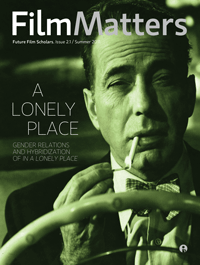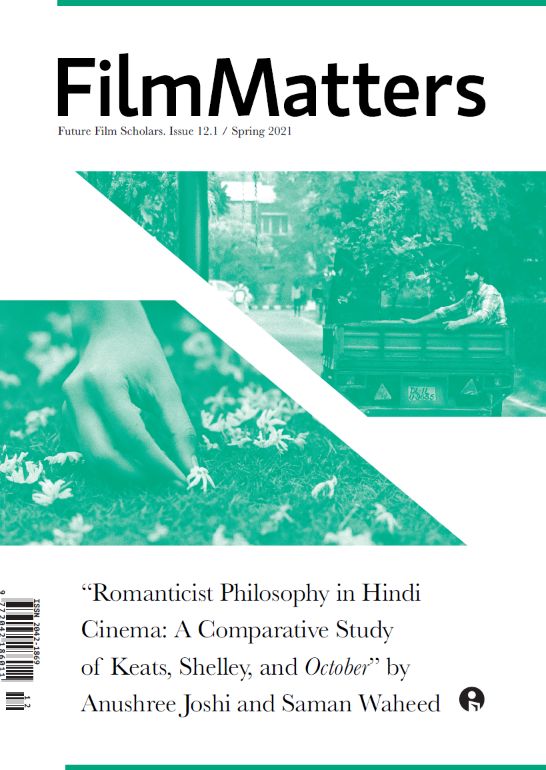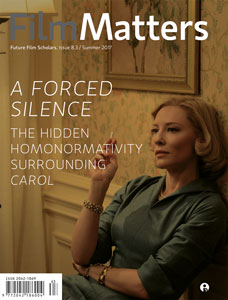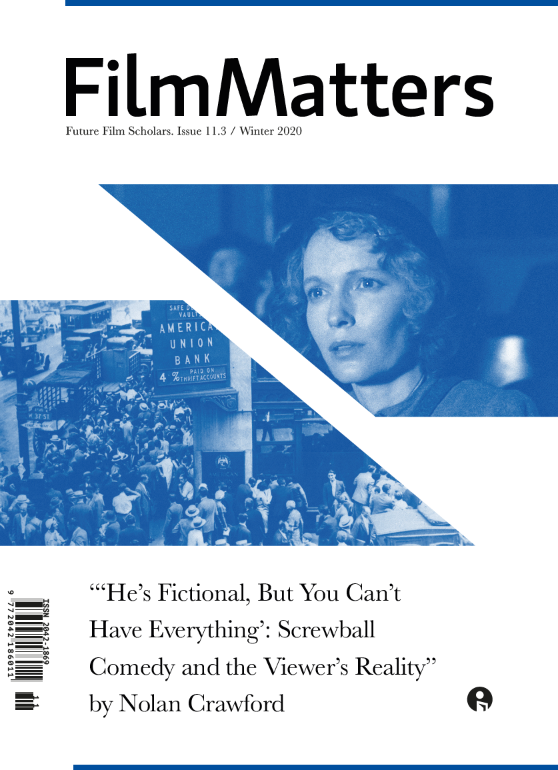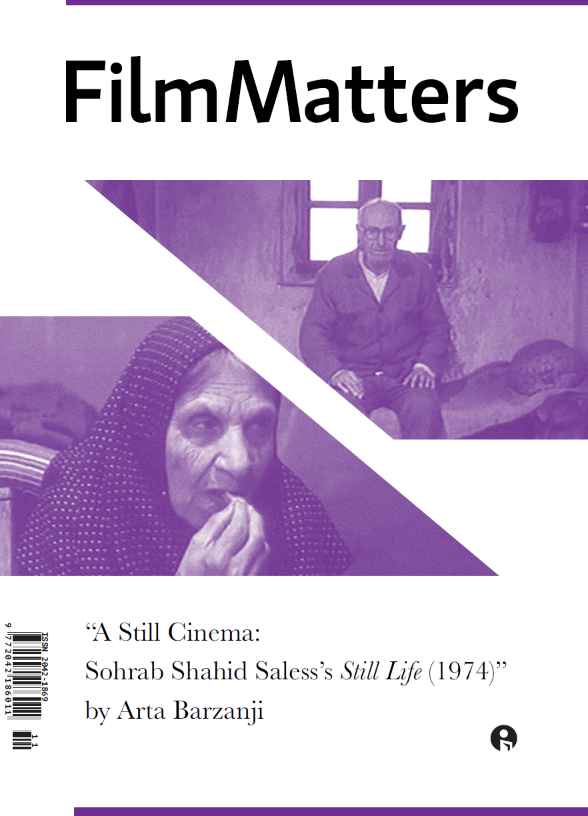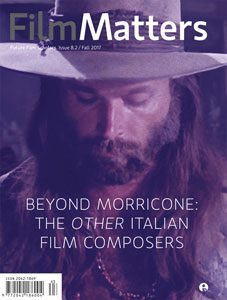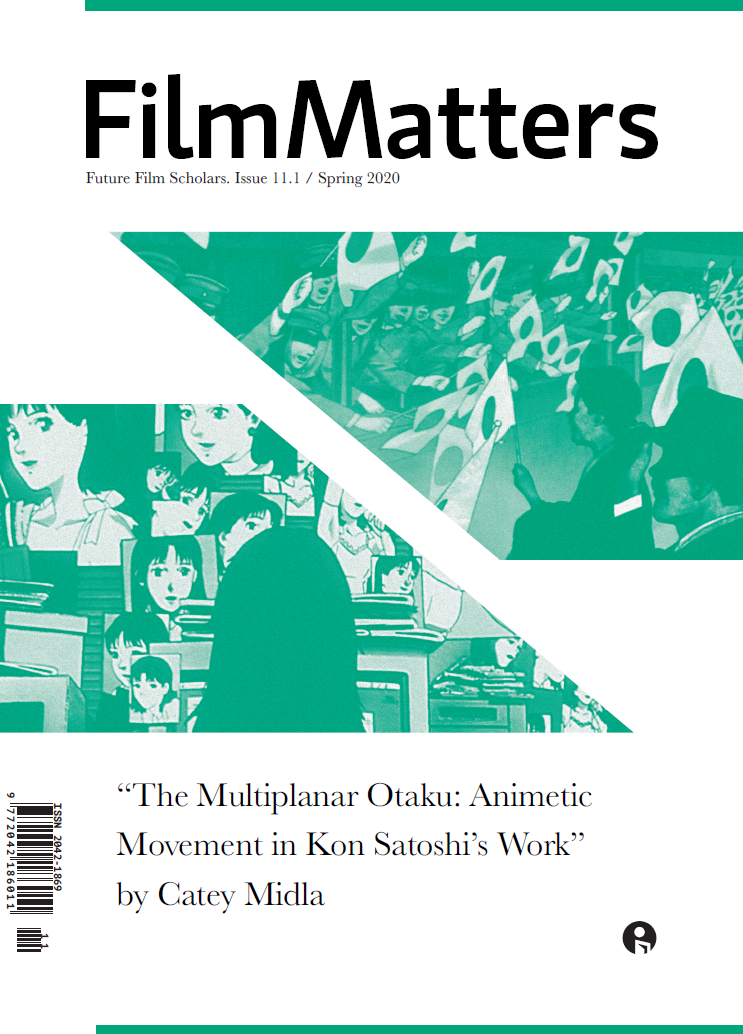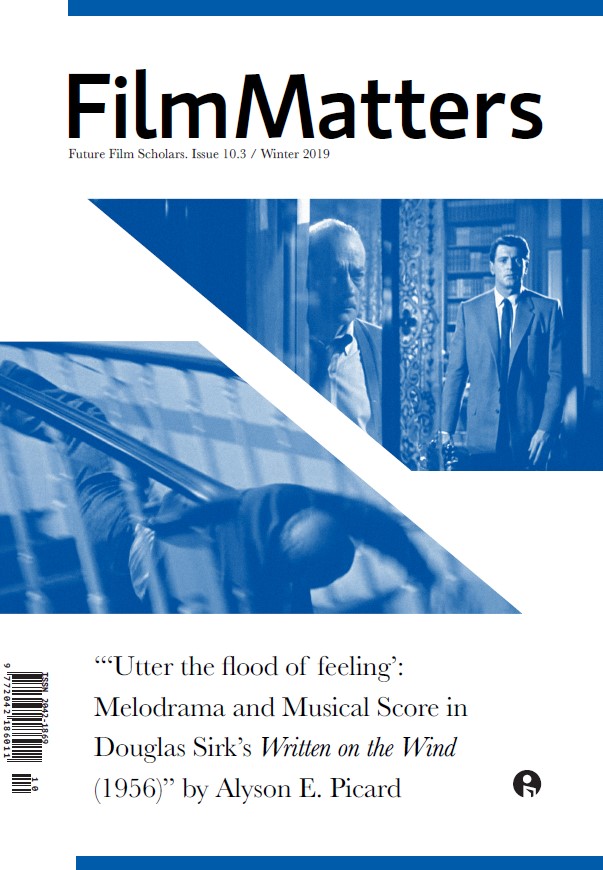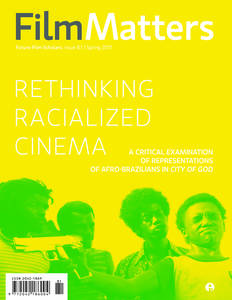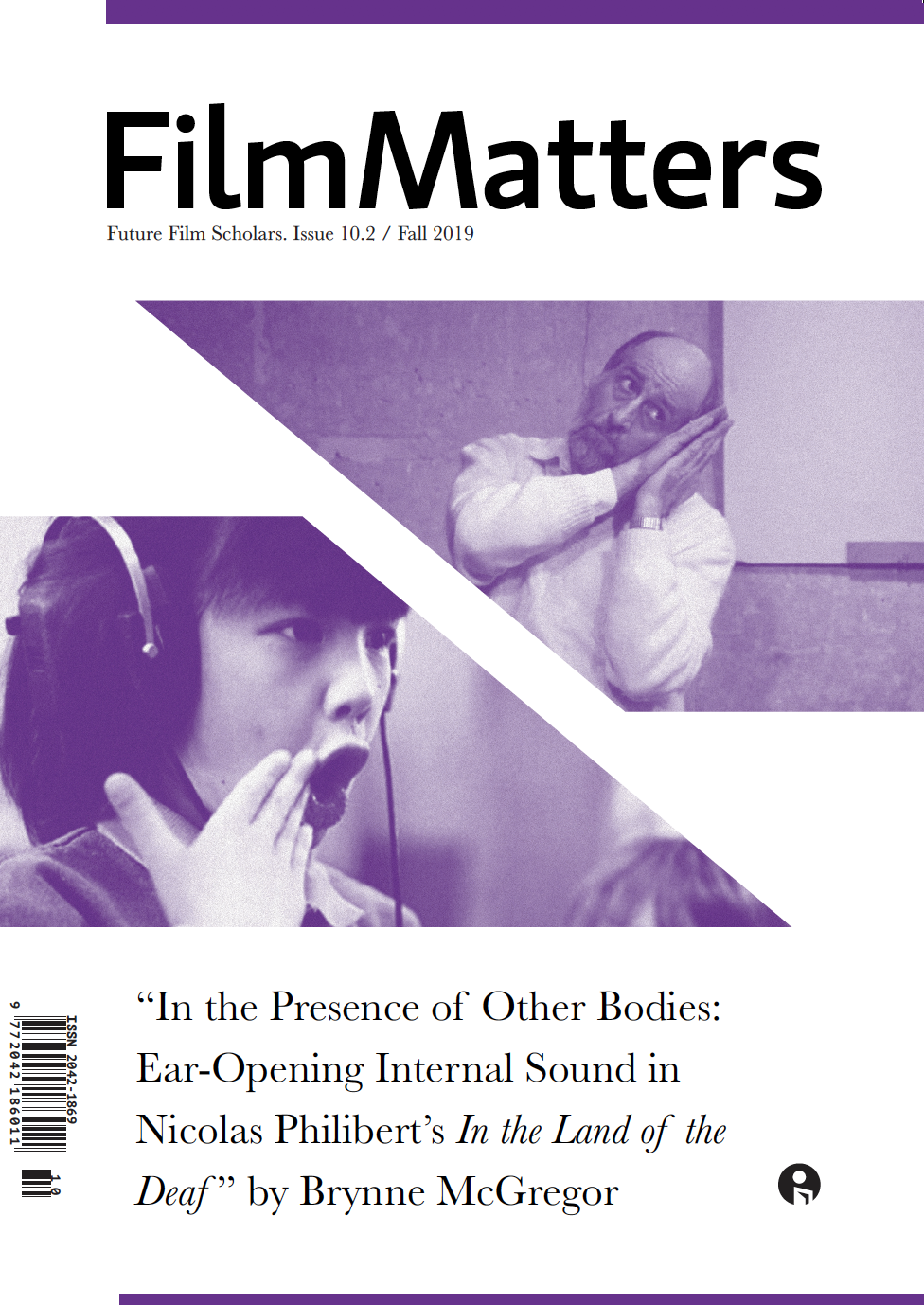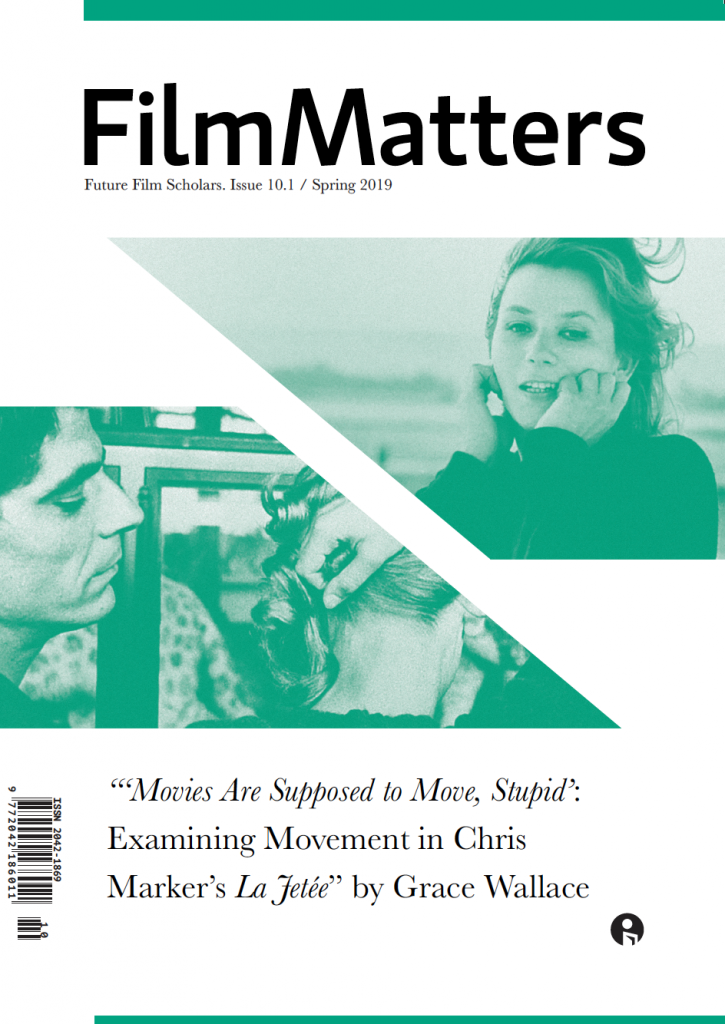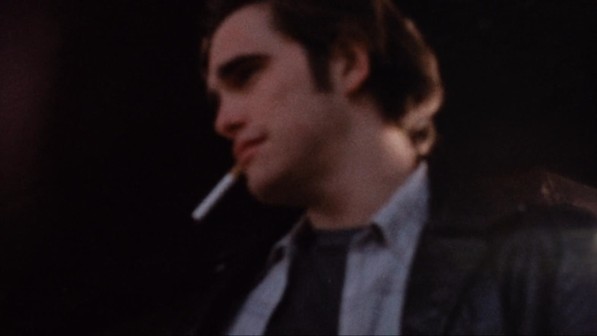
It is reported that people, lying on their deathbeds, see a blinding light that is often thought to be heaven. Perhaps, then, the neon greens and blues flashing on the incapacitated Bob Hughes (played by a young Matt Dillon) represent a Northwest junkie’s afterlife. Based on the autobiographical accounts of James Fogle, Gus Van Sant’s Drugstore Cowboy (1989) combines the crime and thrill of Ocean’s Eleven (2001) with colorful pills to, at once, entice with and warn about the dangers of narcotics.
The film starts as a disjointed narrative with a long-take close-up on narrator Bob Hughes’s face, intercut with home video of him and his group. In this home video, Bob himself is introduced in a low-angle medium close-up, placing us immediately below him, the leader (Figure 1). His group comprises three others: Dianne (Kelly Lynch), his wife and longtime partner-in-crime; Rick (James Le Gros), whom Bob refers to as “the muscle” of their operation; and Nadine (Heather Graham), a young and ethereal woman considered to be naive by the others. The group’s relationships are built on a rocky foundation, not at all aided by the same narcotic addiction that brought them together in the first place. Matt Dillon, in the audio commentary track, compares these dynamics to the 1950s sitcom The Honeymooners. Through the various drug heists across the plot, I find myself inclined to agree.
Each heist they do has two main functions: distraction and extraction, and only Bob can be trusted to extract. In their first scheme, Nadine’s innocence is used to their advantage as she fakes a seizure at the front, allowing Bob to slip behind the pharmacy counter to take what he can. As Rick aids the commotion and shouts that Nadine is “turning blue,” Van Sant punctuates that remark with the mise-en-scène, as Bob pours blue pills into his palm. Cinematographer Robert Yeoman and Van Sant do not shy away from the subject material, giving pills, needles, and belts extreme close-ups (Figure 2). The production design is covered in these vivid blues and reds throughout, forcing the pills to stay on our own mind as lasting imagery. This is coupled with the mannerisms of the characters, like Bob’s near-constant face scratching, to create a cacophony of addiction.
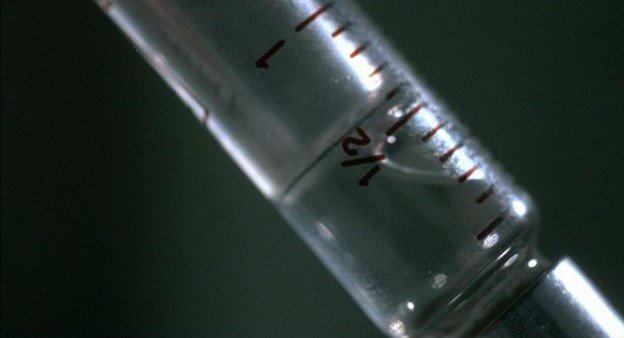
This visual noise is a disturbing beauty. Each pill looks like a piece of candy that I want to pop in my mouth . . . until I remember I’m staring at an addictive substance. Each hallucination, with its floating cows and white picket fences, feels appealing . . . until I remember the needle that was just injected. This film is no glorification of how “cool” drugs are, though, coming in the wake of the post-Reagan era where Just Say No just didn’t work. Instead of fearmongering, the film is educating (and entertaining). Executive Producer Cary Brokaw, in the behind-the-scenes making-of documentary, likens it to allowing the audience to see the attraction of drugs, to understand what that charge means, and then see the destruction.
With that little death comes a chance for rebirth in the form of rehabilitation. I want to root for this second chance, but I find it hard when the setting starts to look and feel suffocating. The window blinds have become bars to Bob’s consensual confinement (Figure 3). Every conversation he has with someone from his old life, from Dianne to Detective Gentry, feels like a prison visit. His old vices can’t leave him, in a very literal sense, and attempt to drag him back.
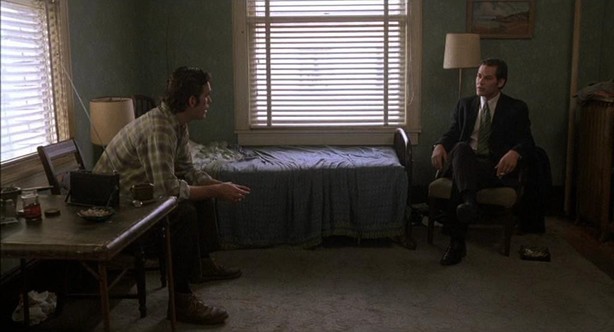
It is through these fights with temptation that we are brought back to where we began, enforcing the cyclical nature of habits. Even as Bob moves forward, making changes in his life, it all still ends with police calls and ambulances. Sometimes, however, we must be able to look at our lives and recognize that, even if we spiral and return to inescapable circumstances, we may still spiral up.
Drugstore Cowboy (Spine #1251) is available from The Criterion Collection.
Author Biography
Amanda Cowan is a graduating student at Georgia Tech studying Computational Media. Following graduation, she plans to pursue a career in filmmaking with a special interest in postproduction coloring. Her free time is spent crafting and supporting local cinemas.
Film Details
Drugstore Cowboy (1989)
USA
Director Gus Van Sant
Runtime 102 minutes
Blu-ray
USA, 2025
Distributed by The Criterion Collection (region A/1)


